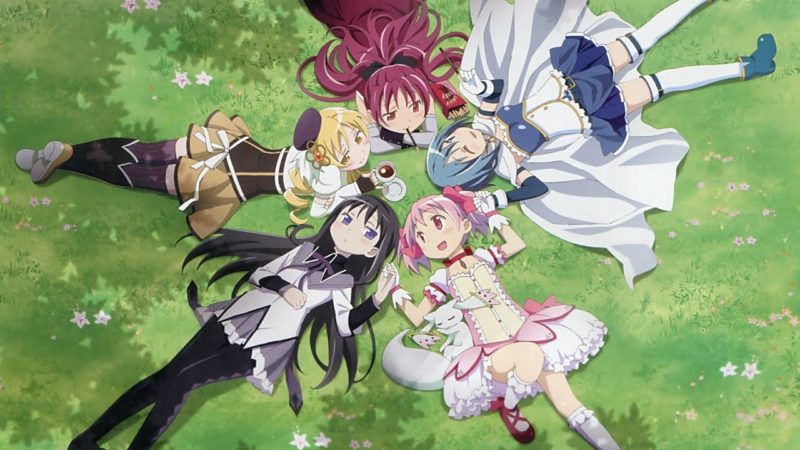
The show surprised me.
PM3 has the usual cute girls who transform to battle supernatural entities. In this case, witches. Each magic girl has her own unique abilities based on the wish she makes that transforms her into a magical girl. I really can’t get deeper into this transformation dynamic without spoiling the story, but I can say that nothing is as it seems. The story surprised me because of how dark it is. You will see girls being ripped apart and eaten by witches. Witches, by the way, aren’t what they seem either. The level of darkness slowly breaks down the main characters. The contrast between the events and the kawaii characters makes the violence and undercurrents worse.
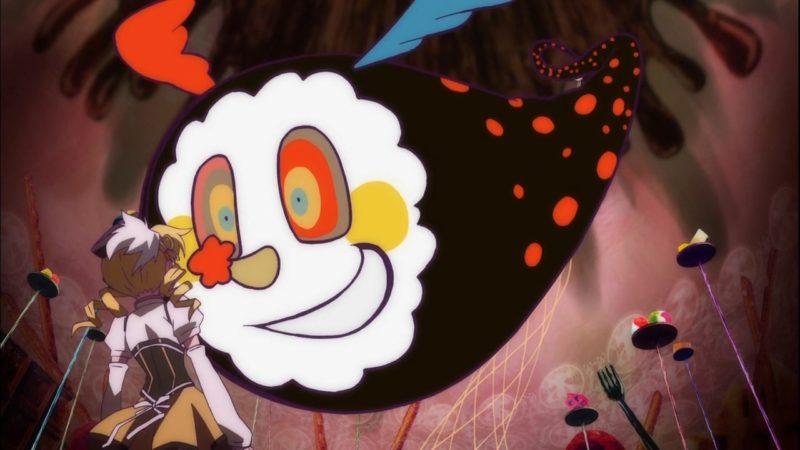
The series has a unique style as you can see from the above image. Whenever the girls fight witches, they end up in a alternative reality the witch builds around itself. Inside the world exists surreal art that would be at home in a modern art gallery. These cut-out animations clash against the bright and colorful designs of the rest of the show. At first, I wasn’t certain about the clash, but many of the scenes offer crisp action animations. For the most part, the series has excellent scenes of subtle animations. If you watch, you will see many fine details in the character motion, particularly during the frequent discussions. I just hope you don’t mind tears. The characters seem to constantly cry. Of course, if we were facing the psychological strains they face near the end, most of us would be balling too.
Interestingly, male characters mostly don’t exist in the story. They are relegated to supporting roles. Madoka’s father appears in a few scenes. Kyosuke, the love interest for Sayaka (Madoka’s best friend), appears in a few scenes. The only male that appears regularly is the genderless creature Kyubey, who merely identifies as male. An anime that avoids the male gaze, characterized by fan service and awkward camera angles, is rare nowadays. Of course, magical girls are written for younger girls, but a significant segment of the audience is male too. There are a few scenes of Barbie-doll nudity during transformations, but none of this is sexualized. Rather it acts as a transition from vulnerability–their human form–to strength.
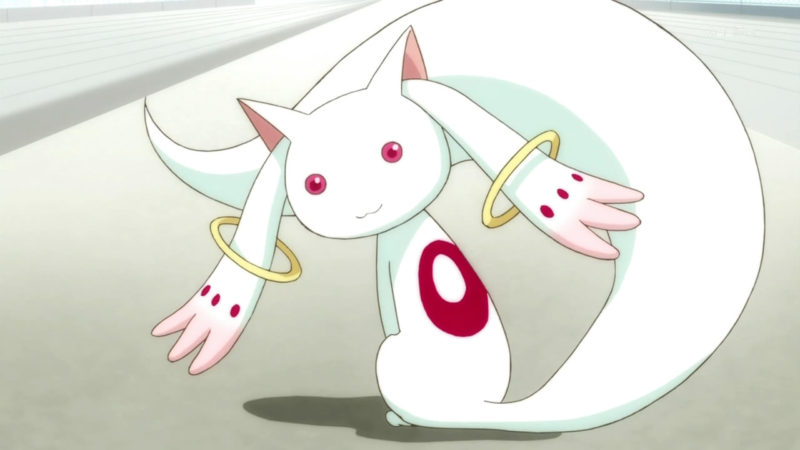
Magical girl anime can provide good lessons for girls–that they are strong in their own way. In Sailor Moon and in PM3, girls become strong in their own way. They don’t embody masculine ideas of strength. Rather, they take on a different angle. They dress in increasingly frilly and feminine outfits–an outward symbol of femininity in the modern world–in their transformations. They also seek to protect others like the usual shonen hero, but instead of using only raw strength, they also use teamwork and intelligence.
However, magical girl anime explore the consequences of power, unlike shonen. PM3 spends much of its time looking at what happens when power requires balance. It’s a theme I wish more shonen stories would examine. Actions do not exist in a vacuum. They have consequences, and actions made with power have powerful consequences that extend far. Look at history for examples of this. The decision to assassinate Archduke Franz Ferdinand sparked a crisis that escalated into a war that killed 117 million people if you include the effects of the 1918 influenza pandemic. PM3 touches on this problem with power leading to a cascade of escalating consequences.
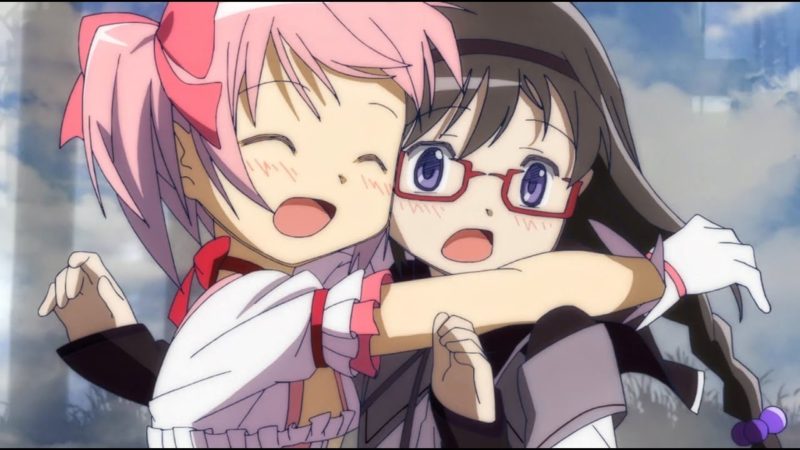
In the end, Puella Magi Madoka Magica focuses on friendship and the desire to help others with their suffering. The themes appear over and over in anime, but they retain their appeal in our disconnected Internet age. PM3 characters spend much of their time in face-to-face encounters instead of using their cell phones. It reminds us that we have to spend time beside people for our connections to remain true. This includes the final moments in a person’s life. A true friend doesn’t pull away when trouble happens or when death finally comes.
The anime could’ve used better character development. Madoka, for being the title character, felt flat and even a little too good. Sayaka and Homura were more interesting, but 12 episodes isn’t a lot of time to develop a character. Beneath the Tangles, however, sees parallels between Madoka and Jesus. The animation is a bit old, 2011 release, but it is worth a look. You might also find yourself surprised by the dark themes it examines.
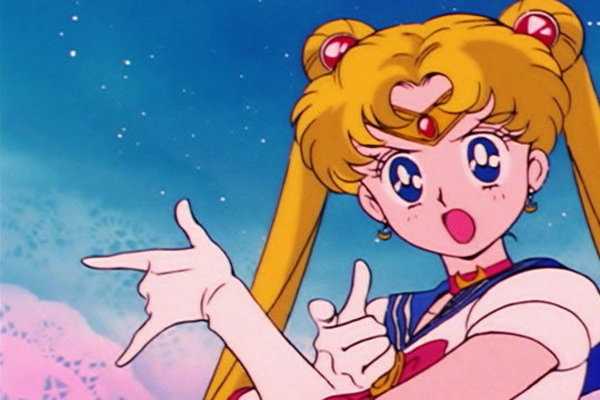
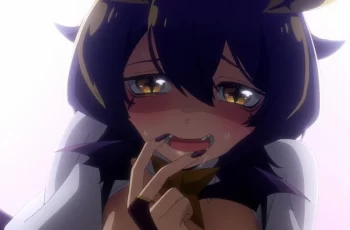
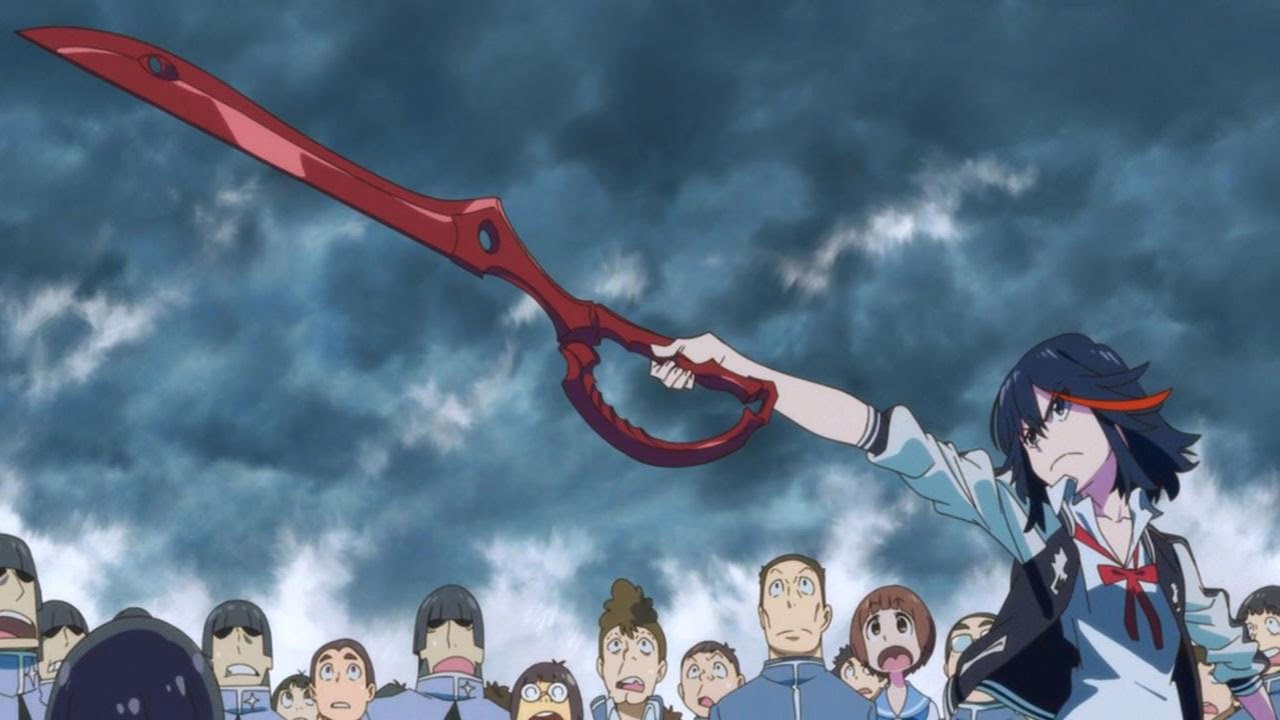
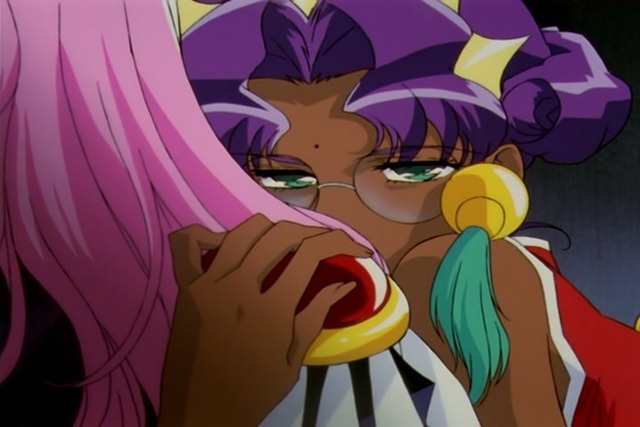
Indeed, and even during the ancient times. Greece for example was big on friendships, especially among men.
As for fan fiction, I often, if at all (so far at least), do not go seeking fan fiction that rewrite certain moments in stories that I do not like, or have a certain character I like killed off, but I can see for others fan fiction can give a what if scenario they can explore.
I never watch Madoka Magica, but I read the manga adaptation a long time ago that was illustrated by Hanokage. I did enjoy the story at the time, but I think I do recall being surprise how dark the story got the further I read given how it started out. I do remember feeling sad of how it ended as it was one of those happy but sad ending. I
Concerning the Magical Girl Genre I think I feel mostly neutral about the sub genre with a slight leaning towards liking it. Perhaps because it’s a sub genre of fantasy, one of my favorite genres. I have not finished reading Naoko Takeuchi’s Sailor Moon, but from what I read I did enjoy the story so far, and would like to return to it one day, especially with getting the recent publication which is supposedly more accurate translation of the original as well as having dialogue that fits more into the time period the story takes in. I also read the story that came before Sailor Moon titled “Codename Sailor V” and liked it as well. I feel it has been a long time for me since I have watch a Magical Girl show let alone read one despite earlier in the year I did watch an anime adaptation of one from Liden Films titled “Magical Girl Spec-Ops Asuka” by Makoto Fukami, which like Madoka Magica is a magical girl story with darker overtones, but minus the adorable character designs and plus the fan service (surprisingly this was a story targeted to young men instead of girls like with other magical girl stories, but so was Kill la Kill from what I have looked up). I only could watch four episodes before having to drop the show for my own mental well being (episode 4 shook me emotionally and not in a good way).
There are now two magical girl stories I plan to try out. The first is shounen (which I just learn. It seems that the magical girl genre is no longer limited to just girls) magical girl series titled “Superb Song of the Valkyries: Symphogear” by Satelight as Cruncyroll has the first three season on their Youtube channel for a limited time, and a shojo one titled “Wedding Peach” by Makoto Fukami. I did watch a few episode of the anime adaptation long ago, but I wrote it off as a Sailor Moon ripoff. After watching a video on youtube that talked about the anime adaption I want to give the story a second chance to judge it for what it is (even though it’s likely going to be an average story for me given what I have learn of the story).
Anyway I do like your take on the sub genre and its symbolism. I can see that transformation symbolizing turning from vulnerability to strength as well as the general meaning behind their outfits and the ways they go about protecting others compared to heroes in battle manga/anime.
Concerning Madoka Kaname, I was personally not bother by her character, but I understand what you mean. I suspect the reason for her being felt flat and too good had to do with her going through what is known as a “flat character arc.”A flat arc is when a character, usually if not always the protagonist it seems (although maybe this could extend to characters who play the mentor role) already understands the truth of the narrative, and so do not go through a personal change. What happens instead is by their influence, be it directly or indirectly, the world around them changes instead. This is seen in stories such as The Gospels with Yeshua, as well as in Dragon Ball with Goku and the mainline anime continuity of Pokémon with Satoshi or Ash Ketchum (or at least past the original series if not the first two seasons maybe) to give some examples. Granted it would not excuse a protagonist to come off as nearly or being flawless though. Characters going through flat arcs make mistakes as well as do change, but their change is not tie to the narrative in a way that a character going through a positive or negative change arc is.
It’s fitting you decided to write an article on the original Madoka Magica as the anime adaption for a mobile game related to the series titled “Magia Record: Puella Magi Madoka Magica Side Story” is coming out next month/year and the first volume of the manga adaptation of the game is out now. I would like to give the mobile game a try, but my iphone is too old to download new games (although I might be getting a new one soon). In the meantime I have the upcoming anime and manga (though I have other books I would like to read first).
It’s not unusual for men to be the largest group of fans with anime aimed at girls. After all, look at “My Little Pony.” Men need an outlet for nurturing and cuteness, but in most modern cultures this isn’t acceptable for straight men. Such stories can hit a guy emotionally because of our built-in (and it is a biological trait of XY chromosomes) need to protect. Guys need emotional intimacy as much as women; anime can provide that. But it can be difficult when a story takes a dark turn.
I didn’t consider the flat character arc for Madoka. It makes sense considering how she acts as a catalyst for character changes around her.
I wasn’t aware of the mobile game. When I looked through my draft queue, I was thinking: “Well, Christmas is coming, so people are busy. Let’s post a lighter article for the decreased reading time everyone has.”
Yes! it was perfect timing on your part.
Anyway, what you brought up is a good point, and it’ something that I have been made fully aware of in recent years from what I have been reading and listening to. A book I am currently reading titled “the friendship cure: reconnecting in the modern world” by Kate Leaver addresses this in the chapter called “Bromance and guy love.” It’s quite sad that a lot of men can’t authentically be themselves due to having anxiety over being shamed by society. Perhaps this is also why the concept of moe appeals to some of these men given how it elicits those desire within them now that I think about it. As for emotional intimacy it can be hard when something happens to a character one is attached to, and there is nothing that person can do about it being that the character they have grown attach to does not exist and the character is at the mercy of what the writer(s). That is the down side when one gets easily attach to a character in a story, like is the case with me.
I’ve read similar studies about men. Male friendship has lost the intimacy it once had during the 1800s and early 1900s.
Fan fiction often rewrites events that people don’t like.